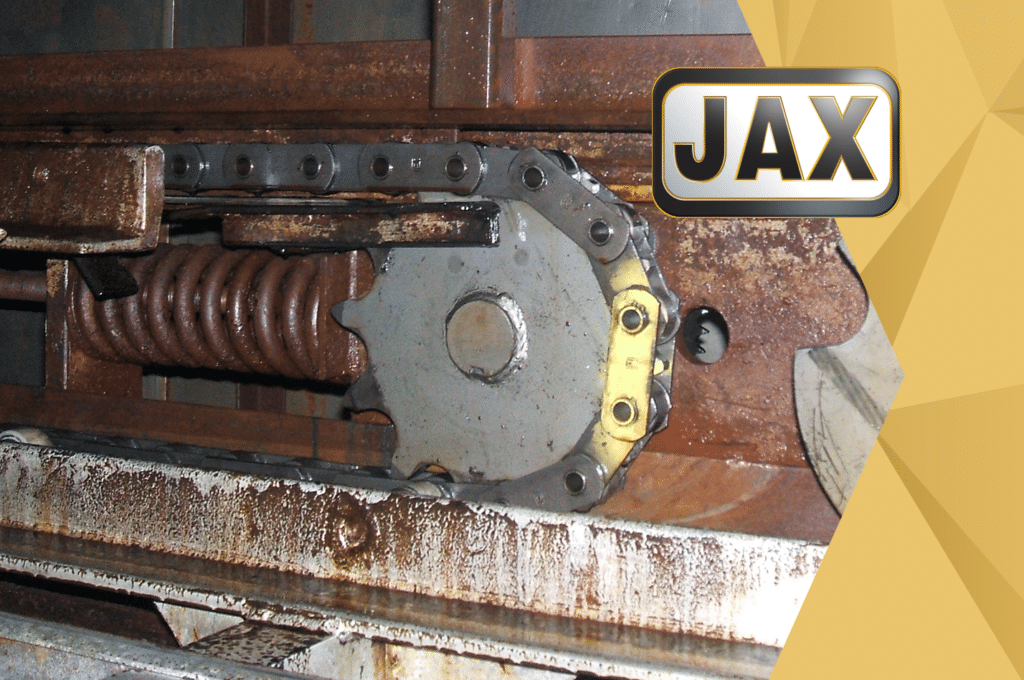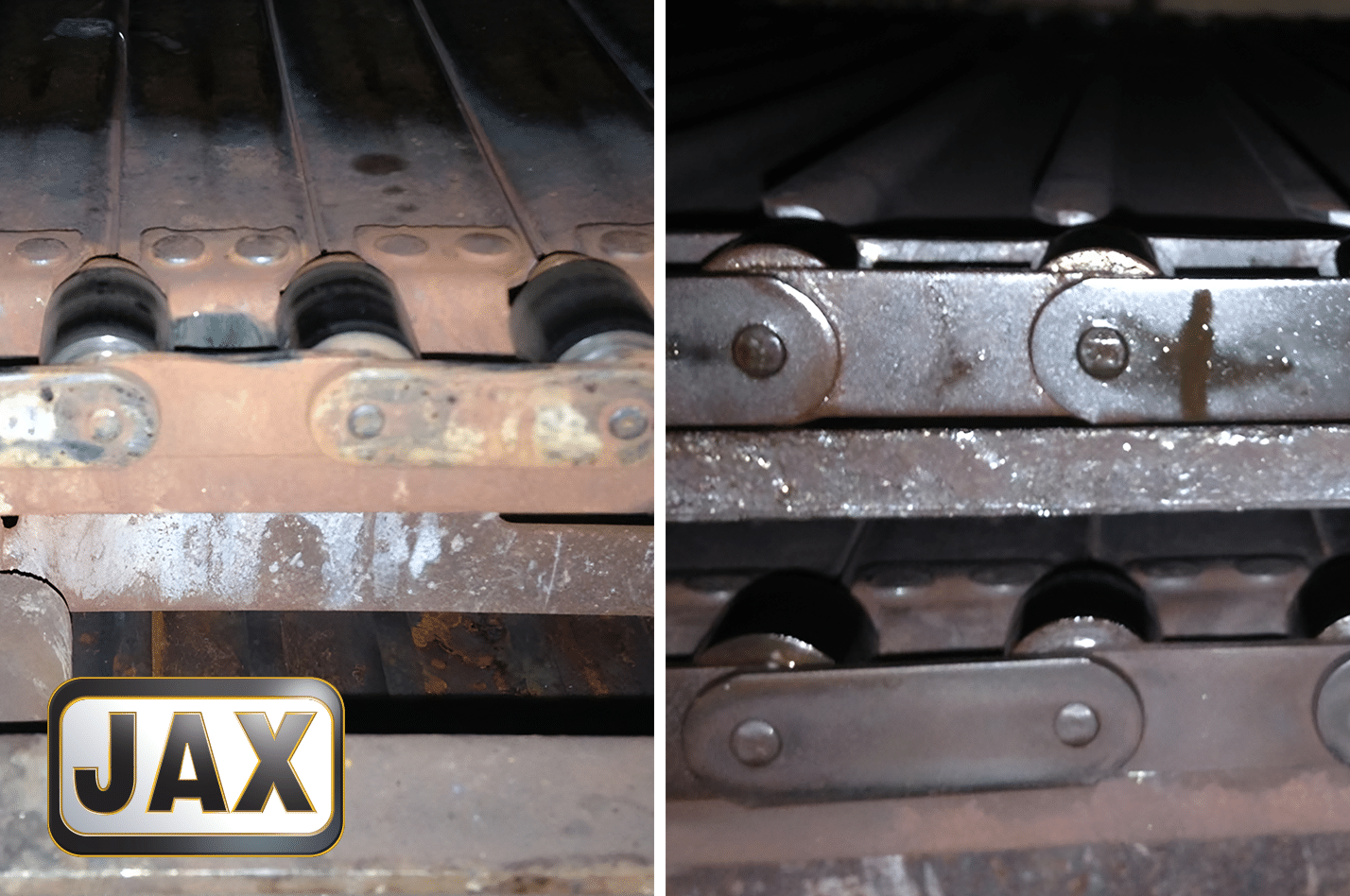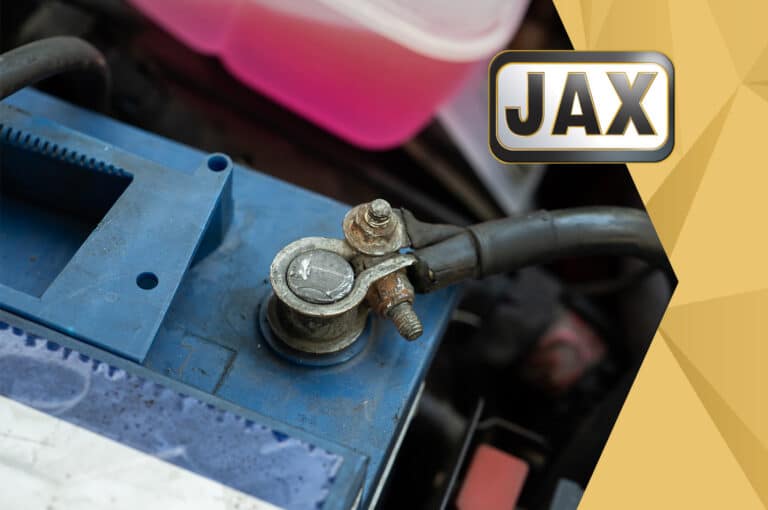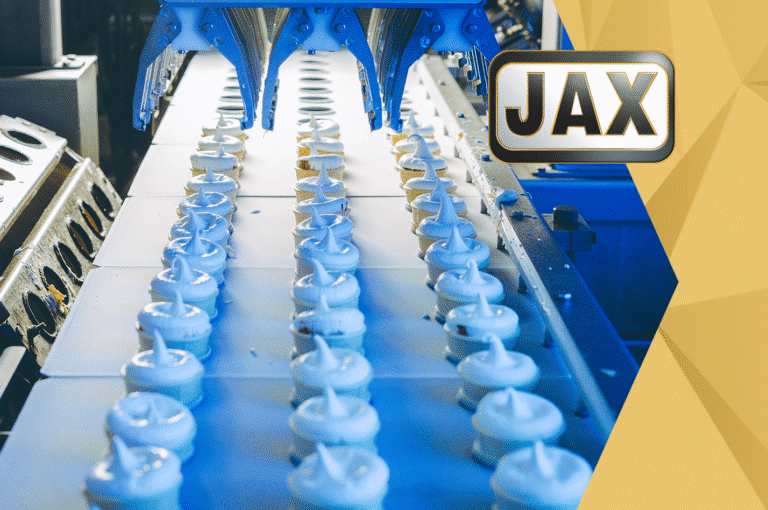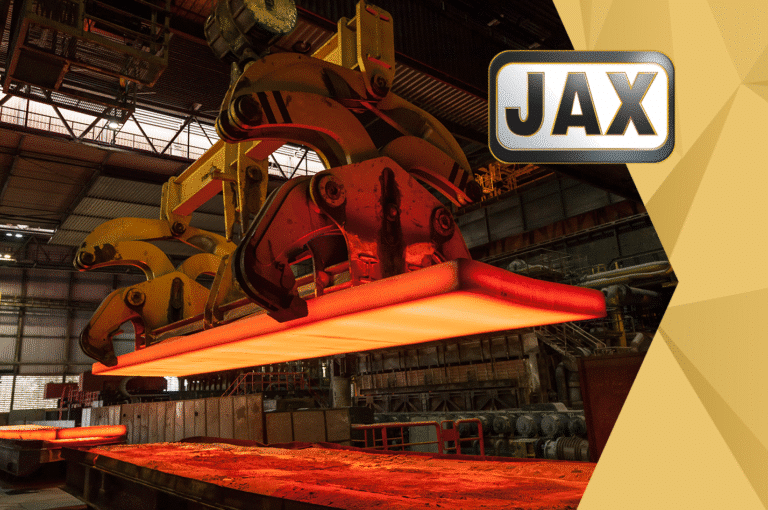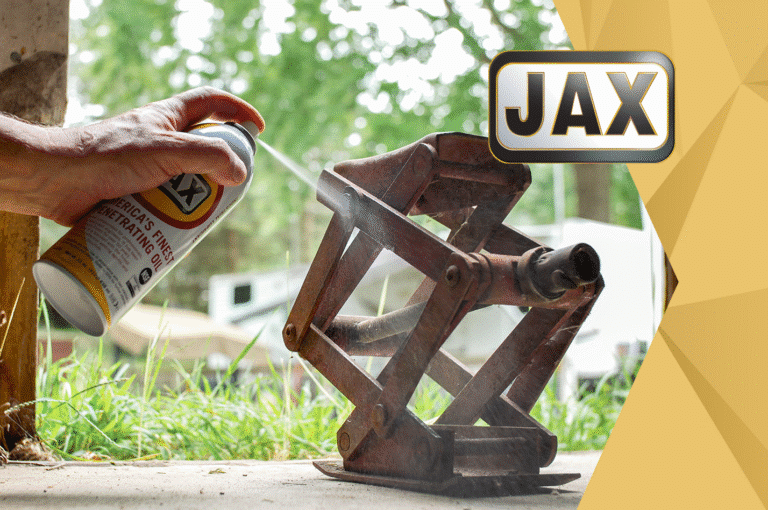A baseline hum of energy and noise level subconsciously tells one that everything is operating smoothly. Think of a busy restaurant, a house with multiple children, or a shopping mall. Now, let’s enter a bustling automotive parts factory and the steady rhythm of production being silenced by an unexpected halt. A conveyor chain responsible for moving heavy engine components breaks down, causing a complete stop in the assembly line. Upon inspection, the neglected chain had become dry and brittle, unable to withstand the constant friction and load. The culprit? – Inadequate Lubrication. The consequences can be significant: replacement of the damaged chain and associated components costing thousands of dollars, downtime resulting in lost production and delayed deliveries, and unhappy customers. Incidents like these highlight the importance of regular chain lubrication in maintaining operational efficiency and preventing costly disruptions.
This article will highlight three critical aspects to help you avoid the consequences of poor chain lubrication. First, we will explore how and why to lubricate a chain, emphasizing the key components that need attention and the methods available to ensure proper lubrication. Next, we will examine how chain wear occurs and how to recognize it by providing insights into the mechanisms of wear and the indicators that signal a chain’s decline. Finally, we will discuss the importance of setting up a consistent monitoring and lubrication schedule. This will highlight the benefits of routine maintenance and the impact of preventive measures on extending chain life and ensuring reliable operation. By understanding and implementing these chain lubrication best practices, you can protect your equipment, minimize downtime, and maintain efficient production.
3 reasons why chain lubrication is essential
Lubricating a chain is crucial for maintaining its performance and longevity. Here are three key reasons why chain lubrication is essential:
- Reducing Friction and Wear: Proper lubrication minimizes the friction between the moving parts of the chain, reducing wear and tear. This helps in prolonging the chain’s life and maintaining its efficiency. Additionally, the energy savings from a properly lubricated chain can be significant. With reduced friction, less power is required to operate the chain, leading to lower energy consumption and cost savings over time.
- Preventing Corrosion: Lubrication can act as a protective barrier against moisture and contaminants that can cause rust and corrosion. This is particularly important in harsh industrial environments where chains are exposed to various elements, humidity, or caustic environments.
- Ensuring Smooth Operation: A well-lubricated chain ensures smooth and consistent operation, reducing the risk of chatter and unexpected breakdowns while improving the overall performance of the machinery.
When lubricating a chain, it’s important to focus on the chain’s critical components, such as the pins, bushings, and rollers. These parts experience the most friction and wear, and proper lubrication to these specific points can significantly extend their lifespan. The lubricant must penetrate the small clearances between these chain components to form a thin film that reduces metal-to-metal contact. This film is maintained through capillary action and the adhesive properties of the lubricant, ensuring a continuous protective layer that minimizes wear and prevents debris from accumulating. Regular application is essential to maintain this film, as it can be displaced by the chain’s movement and the operational environment.
3 common methods for lubricating a chain
Aerosol/Spray Lubrication:
- Pro: Using an aerosol can or other handheld spray method is quick and convenient making it ideal for spot applications and hard-to-reach areas. It allows for easy application without the need for additional tools.
- Con: Aerosol sprays can sometimes result in uneven coverage and may not penetrate deeply into the chain’s critical components. Additionally, overspray can lead to waste and potential contamination of surrounding areas.
Brush Lubrication:
- Pro: Using a brush allows for precise application of lubricant, ensuring that it has a chance to reach all necessary parts of the chain. It also minimizes waste and provides control over the amount of lubricant applied.
- Con: This method can be time-consuming, especially for larger chains or those that are difficult to access. Manual application might also be less consistent compared to automated methods.
Automated Lubrication System:
- Pro: An automated lubrication system ensures a consistent, direct, and continuous supply of lubricant to the chain during operation. This method is ideal for high-use chains and can significantly reduce maintenance time and effort. Drip, spray, and brush lubrication methods can all be fitted to an automatic lubrication system.
- Con: The initial setup cost for an automated system can be high, and it requires regular initial monitoring and maintenance to ensure proper functionality. The system may be limited to certain chain oil viscosities depending on its design. Automated chain lubrication systems may need to be enclosed so they are protected from high ambient temperatures or washdown procedures in certain environments.
It is also important to be able to recognize the signs of a chain nearing end-of-life. Chain wear is a gradual process that occurs as the chain operates and is subjected to friction and stress. However, as chains near end-of-life, this degradation process accelerates. The primary symptom of chain wear is the elongation of the chain, often referred to as chain stretch. This happens as the pins and bushings wear down due to friction and metal fatigue. The material from these components is gradually worn away, creating more space between the links. As a result, the chain becomes longer, which can compromise its fit and function. This degradation reduces the structural integrity of the chain, leading to potential failure if not addressed in time.
Recognizing chain wear involves both visual inspection and precise measurements. Visually, worn chains might show signs of rust, corrosion, or excessive dirt buildup. They may also appear slack or misaligned. ‘Slack’ refers to the chain hanging loosely between sprockets, indicating that it has stretched beyond its original length. ‘Misaligned’ means the chain is not running straight along its intended path, often due to uneven wear or improper tension. However, the most accurate way to monitor chain wear is through chain stretch measurements. Using a caliper or a specialized chain wear gauge, you can measure the length of a specific number of links and compare it to the manufacturer’s specifications. A chain that has elongated beyond acceptable limits should be replaced to avoid failure.
Establishing a consistent monitoring and lubrication schedule is crucial for maintaining chain health and preventing unexpected failures. Understanding how your chain should perform under normal conditions—its sound, speed, and behavior—allows you to quickly identify when something is amiss. Regular lubrication ensures that the chain is never starved of lubricant, maintaining a consistent protective film that minimizes friction and wear. Integrating chain maintenance into your preventive maintenance (PM) schedules and Hazard Analysis and Critical Control Points (HACCP) plans is essential. Regular inspections and lubrication checks should be part of your routine maintenance activities. By setting and adhering to a schedule, you can catch potential issues early, prevent catastrophic failures, and ensure the longevity and reliability of your equipment.
In conclusion, proper chain lubrication is a critical aspect of maintaining industrial machinery and preventing costly downtime. By understanding how and why to lubricate a chain, recognizing the signs of chain wear, and establishing a consistent monitoring and lubrication schedule, you can ensure the longevity and efficiency of your chains. Regular maintenance and preventive measures not only protect your equipment but also contribute to smoother operations and increased productivity. Proper lubrication also plays a key role in energy conservation by reducing friction, which in turn lowers energy consumption and operational costs. Investing time and resources in chain lubrication is an investment in the overall health and success of your operation.
If you’re interested in diving deeper into best practices for chain lubrication in extreme conditions, check out this post. It covers solutions across different market segments, highlights the pros and cons of various lubricant types, and explores how to optimize performance under the toughest environments.

